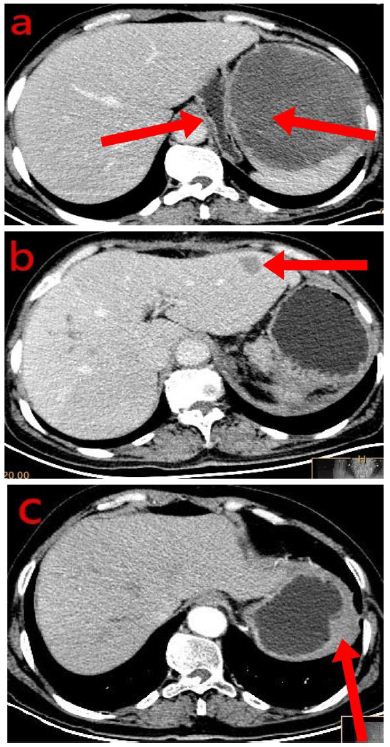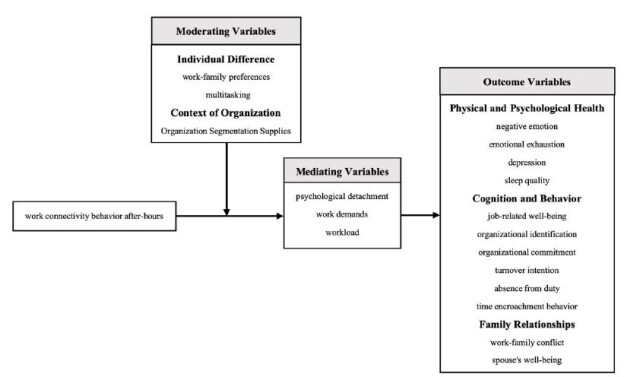DOI: 10.31038/GEMS.2024632
Introduction
Units of measurement and their notation: exa – E: quintrillion 1018; peta – P: quadrillion 1015; tera – T trillion: 1012; giga – G: billion 109; mega – M: million 106; kilo – k: thousand 103.
1 kcal/h = 1.16 W = 4.185 kJ; 1 W = 1 J/s; 1 Wh = 3600 J; 1 kWh = 3.6×106 J or 3.6 MJ; 1 MJ/kg = 1000 kJ/kg; 1MJ = 0.27778 kWh; RQ (respiratory quotient/ratio) = CO2/O2 – when burning carbohydrate: 1; when burning fat: 0.7; when burning protein: 0.8-0.9; when eating a mixed diet: ≈0.83. 1 litre of O2 used by the body, depending on the composition of the food, is 4.5-5 kcal. In our calculations, the m3 weight of each gas was assumed to be 1.98 kg for CO2 and 0.69 kg for natural gas. The amount of CO2 released per kg of fuel was assumed to be 2.3 kg for coal, 3.17 kg for oil and 2.8 kg for natural gas.
Typical Data of the Earth
Surface Area
5.101×108 km² or 5.101×1010 ha; of which Land area: 29.2%, or 1.48949×1010 ha., Forest area: 5.5 billion ha (36.9%) in 1882, which decreased to 4.0 billion ha by 2005. Settlement area: cities occupy at least 2% of the land area. Territorial conditions of other settlements are not known. Waters: 70.8%, or 3.611×1010 ha. Of this, 97-98% is sea and 2-3% freshwater, of which about 10% is surface water, 70% snow and ice and 20% groundwater. The northern hemisphere (2.55×1010 ha) contains about 59.4% of the total land area, which is about 0.884×1010 ha. The southern hemisphere (2.55×1010 ha) covers about 40.6% of the total land area, which is about 0.605×1010 ha. The quantity of gases in the atmosphere (water vapour, CO2, methane, CFCs, N-oxides, sulphur oxides, fluorine derivatives, etc.) varies. Average concentration of CO2 in ppm: in 1750: 250; in 1957: 315; in 1987: 350; in 2015: 403; in 2021: 420.86! Methane concentration in ppb: in 1700: 1,000; in 1986: 1,700; in 2021: 1,875.7!
Mean near-surface temperature: in 1905: 13.6°C; in 1960: 14.6°C; in 2014: ≥14.8°C; in 2023: 14.98°C!
Melting ice: general, but more significant in the northern hemisphere than in the southern!
Note: 1./1. = number of subchapters/index number used in Figure 1.
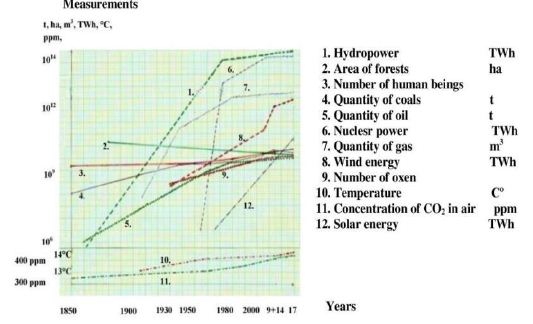
Figure 1: Changings on the World between 1850-2017
Starting Point
According to the United Nations Organization. “As greenhouse gas emissions blanket the Earth, they trap the sun’s heat. This leads to global warming and climate change. The world is now warming faster than at any point in recorded history.” Our opinion is that the situation is not such simple at all. In addition to the Sun’s and the Earth’s own energy, as well as the greenhouse gases, out of which CO2 and methane have already been present since the early life period of the Earth as then probably a reductive condition was, there are different other factors, too, which will be discussed in the subsections. While the incoming energy of the Sun has presumably not changed significantly, in contrast with this the radiated energy of the Earth has decreased. The role of other factors is illustrated by figures and tables in the text and separately in the Appendix, too. Another question is why the greenhouse gas envelope is an obstacle only for the outgoing and not for the incoming energy. In the following part of this manuscript we shell first show the evolution of the life of the Earth.
The Life of the Earth
Before the appearance of biological life, the fate of our Earth was determined not only from its beginning by its own materials and energy but also by those which came from the outside world – the Sun, the cosmos (hereafter: the Sun), too. This process is still going on today, the first stage of which began with the formation of the globe and which was then characterized by an intensive atomic exothermic process. This was the time when atoms were formed. The energy coming then from the Sun, regardless of whether it was the same as it is now or not, had an unknown effect on the Earth’s own energy and processes. This condition could last until the solidification of the Earth’s surface and the appearance of the atmosphere and water. As to the formation of the atmosphere and water we do not know when and how it happened. The water became from H and O and that process had to be exothermic. The radiation of the earth energy decreased due to the subsidence of the internal processes, and intensive energy eruptions could only occur in the form of volcanic activity. In consequence of the changes, the importance of the energy coming from the Sun grew on and on, which until the appearance of biological life could only exert its effect on the Earth’s surface through physico-chemical means in a form corresponding to the greenhouse gases (CO₂ and methane) envelope of that time. This period was the chemical development, during which the conditions for the appearance of the biological life were created.
Life of a living organisms is a biological phenomenon that did not exist before, which arose 3.75/3.8 billion years after the formation of the Earth, in a supposedly reductive environment, and it is nothing other than a continuous and well-regulated energy (electron/ion) migration of different level and complexity, existing in the living beings (from the primordial microorganism and its descendants till the living individuals of today). These primordial bacteria were, for example, chemolithoautotrophs and anaerobes, using CO₂ and other carbon-containing compounds to form methane, or depending on the species, they oxidized sulphur. The electron donor was H. The metabolism of these microorganisms created a new energetic situation, because the energy received from the donor was incorporated into the compounds they produced. With this, the reduction of the amount of atmospheric CO₂ began and the bioenergy and its storage appeared, as well as the transformation of the environment, and its loading with bio-heat and bio-products started. Meanwhile, the Earth continued to radiate its own energy, which, according to geophysicists, currently originates from the Earth’s inner core, and the Sun’s energy continued to arrive in the form of photons (e=h∙f). It is generally believed that, apart from certain fluctuations, the amount of energy reaching the Earth from the Sun can be considered to be the same.
The next stage was the appearance of photosynthesizing microorganisms and the O₂ produced by them, as well as the plants – although trees appeared only 400 million years ago – and the aerobic metabolism. This state resulted in a decisively new situation, because solar energy, which until the photosynthesis only acted on the Earth’s surface through physical-chemical means, since that point of time it has been utilized by the organisms producing their own organic materials, i.e. by storing energy. The essence of this process can be described with the following equation: 6 H₂O + 6 CO₂ + photon = C₆H₁₂O₆ + 6 O₂ and the resulting 1 mol of sugar contains 2,872 KJ of energy. The remains of the dead organisms of that time are the fossil energy sources of today. In the course of continued evolution, higher-order cold-blooded organisms appeared more than 300 million years ago, and then warm-blooded living creatures appeared 230-170 (233?) million years ago. As a result, the load on the environment also increased due to the metabolic products of large animals, which in the case of warm-blooded animals was further increased by the thermal effect, too. The proliferation of herbivorous animals also created favourable conditions for the growth of carnivores. After a biological evolution of 720-770 million years, the first pair of pre-humans appeared in East Africa about 30 million years ago and from there approx. 50,000 years ago, they began to spread throughout the world and the anthropoid period of our Earth began. Humans can be distinguished from animals by their familiarity with fire and its conscious use, (this means the appearance of a new source of increasingly effective energy and CO₂ as well as ash production), the sexual life independent from the estrus and only for pleasure and its aberrations, the domestication and keeping of animals, the accumulation of wealth, the appearance of demands regarding the way of life, the cultivation of plants and the production of consumer goods, the transformation of the environment, the use of means of transport, the utilization of natural energies – water, wind, sun -, the use of nuclear and H energy representing energy sources of increasing importance, and the ability to read/write. As walking on two legs, conscious activity, denaturing nature, use of simple tools, care of offspring, coexistence, communication and some forms of emotional reactions can already be observed in animals, too! The listed energetic and other characteristics that distinguish humans from animals, as well as the high degree of reproduction, the desire for wealth, power and domination, the endless demands and the lack of recognition that we live in a closed system and our possibilities are limited, and the denaturation of nature, as well as the wars which have occurred during the past 224 years have led to the today’s critical state, some of the characteristic energetic and other changes of which are clearly shown in Figure 1. prepared by us in 2015, and as a continuation of it, Figure 3. with the most recent data prepared by the International Energy Agency.
Results
Hydropower
In 2022, 4,289 TWh of electricity was produced by hydropower in the countries of the world, which is 15% of the total amount of electricity and half of the renewable energy (Figure 2). This capacity represents a depreciation compared to the previous period, which was caused by climate change through the drought. The main producers are China (30%), Brazil (10%), Canada (9.2%), the USA (5.8%) and Russia (4.6%). In terms of environmental pollution, this is a clean energy.
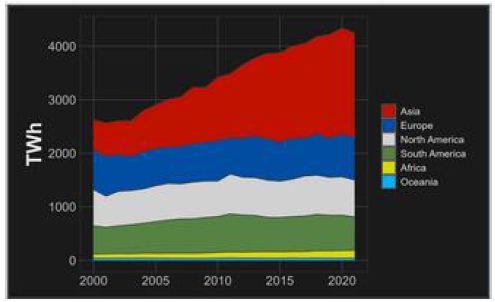
Figure 2: Production of the hydropower-stations between 2000-2020 (Wikipedia)
Forest Area
Based on data from the World Bank, Knoema.com wrote that between 1990 and 2015, 89 countries reported a decrease of their forest area in the last 25 years, 80 countries reported an increase in size of their forests, and 37 countries reported that there was no change. During the mentioned period, the total amount of forests as an extremely important source of energy and raw materials decreased by 1.3 million square kilometres, and the indispensable role of the forests and their bio-systems living there was also lost. The data described here are already included in Figure 1.
Number of People
Since the appearance of man, the number of mankind, even if it has shown significant fluctuations in certain periods, in the end, is constantly increasing. This is confirmed by the following data. 1850: 1.17; 1937: 2.1; 1950: 2.5; 1980: 4.4; 2014: ≈ 7.5 billion. The rate of reproduction shown in Figure 1 is currently accelerating. This can be determined from the following numbers: While on 20 April 2022 the Earth’s inhabitants were 7,944,521,000, on 2 April 2023 there were already 7,993,210,376, i.e. there were 48,686,376 more people. And now, on 27 February 2024, we were 8,093,918,390 because our number increases by one in less than 1 second.
In the beginning, people’s place of residence was less permanent (gathering, fishing, hunting, then grazing period). With the increase in their number and their needs, as well as with the change in their way of life (the spread of farming and domestic animal husbandry), permanent settlements developed and the communal problems related to them appeared. Although cities and even city-states existed in ancient times, urbanization was slow until the period of industrial revolution. The increase in the number of people, the development of agriculture, trade, transport, mining and industry helped the formation of (large) cities. The urbanization process began to accelerate in the 18th century in Europe while on other continents, depending on the circumstances, in the 19th and the 20th century and this process is still taking place today, in many places in an explosion-like form. In 2003, there were 409 cities/agglomerations in the world with more than one million inhabitants. In total, more than 1.15 billion people lived in them, using more than 70% of the world’s resources. Today, more than 50% of our Globe’s inhabitants live in cities, but this proportion varies from country to country. Settlements, especially cities, differ from the natural environment and have a denaturing effect. (With people’s needs, the heat demand, the size and comfort of their homes have also increased compared to those prevalent earlier. The sunlight absorption and heat emission of buildings and roads are different from before. Air pollution, noise and light load have increased. In cities, the so-called “desert climate” prevails). Think about how different the values of individual parameters are over a city with 10 million inhabitants and an area of any natural environment of the same size! It should also be mentioned that currently, the majority of people live in the northern hemisphere of the Earth, which is not surprising for several reasons, but this fact also has its consequences. The rapid increase in the number of mankind is also accompanied by the increasing use of fossil and other energy sources. Without a substantial reduction in the number of mankind and a radical reduction of needs, our situation is hopeless.
Quantity of Coal and Oil Used
As it can be seen on Figure 3 in 2019, after a long increasing the quantity of all fossil energy decreased. In the case of oil, the higher price might also have an influencing effect. The COVID-19 pandemic presumably played a role in the general decline. According to the IEA’s latest report, the amount of oil used was 8.7% more in December 2023 than in December 2022, so growth seems to have started again. They wrote that the demand for coal in 2023 will be greater than earlier with 1,4% and the total quantity will be more than 8,5 billion t-s in the first occasion.
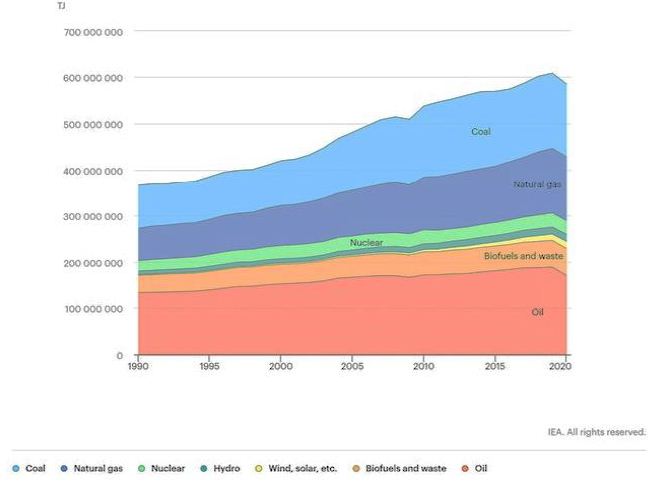
Figure 3: Production and use of different energies on the World between 1990-2020 között (IEA datum)
Nuclear Energy
According to the International Atomic Energy Agency’s annual report published in Vienna, in 2023 there were 438 nuclear power plants operating worldwide with a capacity of 351,327 megawatts, generating 2,447.5 terawatt hours of electricity. In 2019, the amount of electricity produced also decreased. The electricity produced at that time covered 16% of the world’s energy needs. According to the latest IEA report, the amount of electricity produced in December 2023 increased again and was 2.6% more than in December 2022.
The Amount of Extracted Natural Gas
In 2019, the production of natural gas, which had been continuously increasing over the years, also decreased. However, according to the latest IEA report, the amount of gas used in December 2023 was 3.9% more than in December 2022. The reduction in the amount of oil, coal and natural gas used also reduced the amount of CO₂ entering the atmosphere.
Wind Energy
From the beginning of the 2000s, the installation of windpower plants for the utilization of this weather-dependent energy increased dynamically, far exceeding previous expectations, mainly in countries with sea coasts (Table 1).
Table 1: Production of the wind powerstations between 2000 and 2020
|
Years
|
Prediction in 2000 |
Effective production |
Difference
|
|
2010
|
85,4 TWh |
346,4 TWh* |
4× |
| 2020 |
177,5 TWh |
1594 TWh* |
9×
|
Data from 2023 Statistical Review of World Energy
Farm Animals
The number of livestock has increased substantially over the past 100 years, in line with the growth in the number of people and their needs. This is shown by the data in Tables 2 and 3. The increase in the number of animals and changes in husbandry practices have unpleasant consequences (methane, CO2, heat, manure, urine, etc.). According to the latest IEA data, agriculture is responsible.
For about 40% of the methane released into the atmosphere. According to other experts the distribution of sources within agriculture is the following: rice production about 20%, animal husbandry 15-25%, and microbial decomposition of organic matter. According to them, 74% of methane of animal origin comes from cattle, 9% from sheep and 5% from buffalo, and small amounts of the gas are also formed in the rectum of pigs and poultry. These authors do not even mention methane due to the activity of free-living animals and non-animal anaerobic microbes. The IEA estimates that the oil and gas sector contributes about 37% of the methane in the atmosphere, waste contributes about 27% and other sources about 2.8%. They do not mention the release from natural living organisms, or from land and sea due to ice melting (the permafrost phenomenon). If the greenhouse effect of CO2 is 1 unit, that of methane is 21 times greater and that of N-oxides 310 times greater! There is also a view that water vapour has the greatest greenhouse effect. Some of the other consequences of animal husbandry are shown in the Tables in the Appendix. According to IEA experts, methane is responsible for 30% of warming. They also reported that emissions from the oil and gas industry have recently fallen substantially.
Table 2: Number of the different farm animals between 1930-2023
|
Time
|
Animals and their number x 106 |
| |
Oxen |
Horses |
Pigs |
Sheep |
Hens
|
| 1930th |
438,9
|
68,1 |
193,3 |
563,0 |
– |
|
1999-2000
|
1351,4 |
58,2 |
922,8 |
1056,1 |
14860,0
|
| 2017 |
1491,6
|
60,5 |
967,3 |
1202,4 |
22,8×103 |
|
2021-2023
|
1913,7 |
– |
1913,8 |
1266,0 |
34.4×103
|
Abreviation: – = datum is unknown
Table 3: Number of different farm animals on various continents
|
Specification
|
Animals and their number x 106 |
| |
Goats |
Buffalos |
Donkeys + Mules |
Camels |
’s species*
|
| Europe |
17,9
|
0,2 |
0,8 |
– |
– |
|
Asia
|
465,2 |
160,9 |
18,8 |
4,2 |
–
|
| Africa |
218,6
|
3,4 |
15,4 |
15,1 |
– |
|
N., C. and S. America
|
35,8 |
1,1 |
7,8** |
– |
5,3***
|
| Oceania |
0,7
|
– |
– |
– |
– |
|
World total in 1999-2000 and in 2017
|
738,2 |
165,6 |
42,8 |
19,3 |
5,3
|
|
1034,4
|
200,9 |
55,3 |
34,8 |
–
|
Rövidítés: *Lama, alpaca, vicuna és guanaco together; **Datum only from C.-America; ***Datum only from S. -America; -: datum is not known.
Role and Utilization of Solar Energy
The average temperature of the Earth is now largely determined by the amount of energy from the Sun, which is thought to be constant, the amount of which was considered earlier to be 3.86×1033 erg/s, i.e. 3.86×1023 kW of power. In addition, it is also influenced by the Earth’s own energy and by the effects of the existence of living organisms and the consequences of human activity. Not all of the solar energy emitted reaches the Earth’s surface, because about 30% of the Sun’s energy is reflected from the upper surface of the atmosphere. However, we do not know whether the greenhouse gas envelope has any retention effect and how much, if any. The rest is absorbed by clouds, surface water, ice, snow and land. These represent the Earth’s heat capacity. On the upper surface of the Earth’s atmosphere, in the case of a perpendicular radial position, the energy coming from the Sun represents a power of 1.36 kW/m². The amount of solar energy received and reflected from the Earth’s surface depends on environmental influences. In addition, there is the Earth’s own energy, and the ever-increasing energy generated by the existence and activity of humans or extracted from the Earth by them and emitted by the living organisms. Together, these add up to the total energy under the envelope of greenhouse gases and water vapour. The natural escape of these energies is uniformly retained by the envelope according to the laws of nature, promoting the warming of the Earth’s surface, where ideally the energy input would have resulted in a heat load of 1kW/m², equivalent to 1 kJ/s. This value is the so-called solar constant. We do not know what the solar constant and all the other energy values are today. In 2000, a huge development started in the field of solar energy utilization, because the installation costs of the systems decreased to an unexpected extent and people’s attitudes changed a lot. The annual amount of solar energy collected in the form of electricity between 2012 and 2022 in each year on the world was 104,212; 140,515; 180,712; 228,920; 301,082; 395,947; 489,306; 592,245; 720,429; 861,537 and 1,053,115 MW. It is not known that what is the consequence of the energy captured by the solar collectors on the global temperature?
Occurrence and Role of CO2
As for the CO2 content of the atmosphere, this gas has been present since the early life of the Earth and it is persisting there for a long period of time varying amounts since the beginning (Figure 4). Human life and activity, as well as keeping of livestock and changes in the population of natural living creatures and various geological events, influence the quantity of different gases in the atmosphere. Among these, carbon dioxide, methane, sulphur oxides, water vapour and, more recently, nitrous oxide and fluorine-containing gases have been and are of particular importance because they cause the greenhouse effect and thus accelerate global warming, i.e. climate change. The average concentration of CO2 was in 1750: 250 ppm; in 1957: 315 ppm; in 1987: 350 ppm; in 2015: 403 ppm. On 2 April 2022, atmospheric carbon dioxide concentrations reached their highest level measured at present time at the Mauna Loa monitoring station in Hawaii. The concentration there was 420.86 ppm. Over the Northern Hemisphere 500 ppm was already measured before!
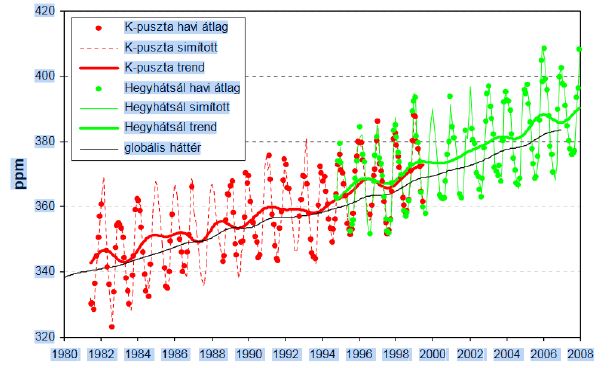
Figure 4: Concentration of CO₂ in the atmosphere (Haszpra László)
The annual amount of CO₂ which was emitted by the countries of the world between 2012 and 2022 in million tonnes per year was 32,219.8; 32,676.8; 32,779.0; 32,773.7; 32,818.0; 33,306.2; 34,013.9; 34,044.0; 32,284.9; 34,052.2; 34,374.1. An average person, if not actively exercising, produces approximately 1kg of carbon dioxide per day that means that worldwide more than 8 billion kg-s, plus the CO₂ which has emitted by animals and then we did not mention the other sources. The year 2020 was the only exception when the steadily rising quantity decreased. The reduction then was the result of the decreasing use of fossil fuels in consequence of the COVID-19 pandemic.
Methane concentrations were in 1700: 1,000 ppb; in 1986: 1,700 ppb; in 2021:
1,875.7 ppb! According to IEA data, the amount of methane released into the atmosphere in 2023 was 349, 476 kt-s and therefore its concentration became more than 1,900 ppb which means a slight increase compared to 2022. This gas persists only for some 10 years in the atmosphere. In spite of the fact that the concentrations of CO₂ and methane which are steadily increasing some people expect and hope the stop of climate change.
The Average Temperature of the Earth
The average temperature of the Earth is influenced by several factors in their own way. These are: the Earth’s own energy, solar radiation, greenhouse gases, the production of previously unknown hydro, wind, solar and nuclear energy, heat from burning fossil raw materials, waste and woody plants, heat emitted by humans, warm-blooded animals and micro-organisms, heat from industry, transport, agriculture, architecture, housing, space exploration, heat from wars and because of the new situation related to denaturing of nature, etc (Figure 6)
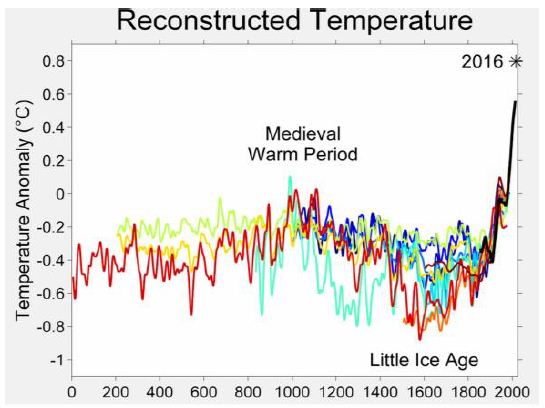
Figure 6: Changing of the temperature of the Earth during last centuries (Wikipedia)
Note: “O” point is equal with some 13,6°C from 1905. Each line was calculated by different expert.
Since the Earth was born, it has been emitting energy, the value of which has decreased over time and is now estimated by experts at between 43 and 49 TW. Without its own energy, the Earth’s temperature would be below freezing point. Despite the supposed ‘uniformity’ of solar radiation, the average temperature of the Earth has never been the same over longer or shorter time periods – see Figure 5. Ice-ages and warming up periods have alternated each other due to terrestrial – chemical, biological, geological and/or, in the present era, human life and activity – or extraterrestrial (?) influences. For example: from the early 1000s there was a so-called little ice age, which was replaced by a warming period due to the changes brought about by the industrial revolution from 1778 on. There is now ample evidence that air and ocean temperatures are rising, snow and glaciers are melting and the sea level is increasing. Between 1905 and 2005, the temperature rose by 0.74 ± 0.18°C every ten years. In the second half of the period under study, the rate of warming doubled compared to the value observed at the beginning (from 0.07 ± 0.02°C to 0.13 ± 0.03°C, per decade). This phenomenon is the so-called climate change. On 21 November 2023, for a short period of time, the Earth’s temperature was already more than 1,3°C warmer (14.9°C) than the global average temperature before the industrial revolution (13,6°C), which was an unprecedented record, reported by the Europe-based Copernicus Climate Change Service. The Earth’s average temperature has been rising for decades as we are facing a self-generating phenomenon because of snow and ice melting, the rising of surface water temperatures, and as the main causes are not diminishing, either, there is little we can do to stop the process [1-11].
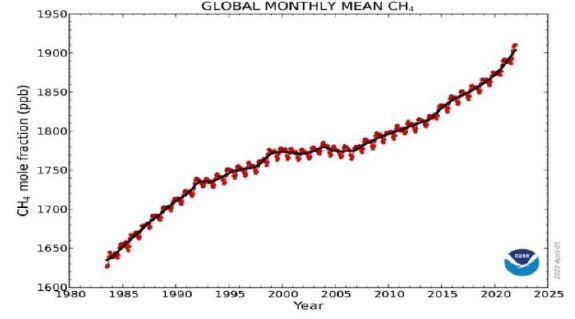
Figure 5: Concentration of methane in the atmosphere (NOAA)
Final Conclusion
We think that a thorough analysis is needed to determine which of the listed factors play a role, and exactly what role, in the climate change process, because in the nature there are no energy changes without effect and causes. So, one of the most important questions is what exactly the role of the greenhouse gas envelope and that of the different factors? In other words, does the current gas envelope affect the amount of solar energy considered to be constant arriving at the Earth’ surface at present compared to its amount which was before the industrial revolution i.e. does the gas envelope have any influence on the incoming energy, or does it just hinder all energies which are present under the envelope in leaving from our environment?. Furthermore, it is a fact that the amount of each of these factors (except the size of forests) are increasing and their energetic and environmental loading importance compared to their 1778 value is steadily growing. Is it conceivable that these changes have no effect? We think the answer is no. Finally, is such view acceptable that the Earth’s own energy within the envelope, together with the solar energy, the biological heat production of the living organisms and the use of non-fossil natural energies by human beings, and the energy release from all combustion processes do not have any effect on the circumstances of our Earth? In our opinion, this is not acceptable, either. If we continue to spend huge amounts of money on goals that are irrelevant to our survival (wars, military investments, unnecessary space exploration, tourism, etc.) instead of stopping climate change and neutralising its consequences, we will miss our chance of survival (Tables 4-6).
Table 4: Data to the circlation of substances and energy on the World
|
Specification
|
Years
Mass and average heat value of fuels; Quantity of CO2 liberated from them
|
|
1860
|
1935+37 |
1958 |
1980 |
2000+05 |
2009+14 |
2017
|
| Oil × 106t |
1
|
279,5 |
809,8 |
3059 |
3590 |
4117 |
4365 |
|
40,5 MJ/kg
|
4,05×1010 |
1,13×1013 |
3,27×1013 |
1,23×1014 |
1,45×1014 |
1,66×1014
|
|
| CO2 m3 |
3,17×109
|
8,86×1011 |
2,56×1012 |
9,69×1012 |
1,13×1013 |
1,3×1013 |
|
|
Coal × 106t
|
136 |
1280 |
1762 |
2805 |
5878 |
7823 |
7549
|
| 20,35 MJ/kg |
2,76×1012
|
2,6×1013 |
3,58×1013 |
5,7×1013 |
1,18×1014 |
1,59×1014 |
|
|
CO2 m3
|
3,12×1011 |
2,92×1012 |
4,05×1012 |
6,45×1012 |
1,37×1013 |
1,72×1013
|
|
| Gas × 109m3 |
–
|
71 |
400 |
1531 |
2778 |
3479 |
3768 |
|
37 MJ/kg
|
– |
2,62×1012 |
1,48×1013 |
5,66×1013 |
1,02×1014 |
1,28×1014
|
|
| CO2 m3 |
–
|
1,37×1011 |
7,72×1011 |
2,95×1012 |
5,36×1012 |
6,72×1012 |
|
|
All together
|
|
|
|
|
|
|
|
| MJ/kg |
2,8×1012
|
3,99×1013 |
8,33×1013 |
1,8×1014 |
3,66×1014 |
4,53×1014 |
|
|
CO2m3
|
3,15×1011 |
3,94×1012 |
7,38×1012 |
1,9×1013 |
3,01×1013 |
3,69×1013
|
|
Abbreviation: – = Datum is unknown
Table 5: Living conditions of different farm animals
|
Specifications
|
Species of animals and their number x million |
| Oxen |
Horse |
Pig |
Sheep |
Hen
|
|
NEEDS
|
1 anim. |
1351,4 |
1 anim. |
58,2 |
1 anim. |
922,8 |
1 anim. |
1056,1 |
1 anim. |
14860,0 |
|
O2
|
|
|
|
|
|
|
|
|
|
|
| *calf l/day
|
390
|
5,27×1011 |
– |
– |
– |
– |
– |
– |
– |
– |
|
*calf l/year
|
1,42×105 |
1,92×1014 |
– |
– |
– |
– |
– |
– |
– |
–
|
| CALORIE |
|
|
|
|
|
|
|
|
|
|
| kcal (kJ) x kg0,75 daily |
Basal metabolism in case of all animal species in general 70 (293) |
| yearly |
2,55×104 (1,07×105) |
| kJ x kg0,75 daily |
Existential metabolism in case of all animal species 475-575 in general 525 |
| yearly |
1,91×105 |
| *calf daily kJ |
7712,9
|
1,04×1013 |
– |
– |
– |
– |
– |
– |
– |
– |
|
yearly kJ
|
2,86×106 |
3,8×1015 |
– |
– |
– |
– |
– |
– |
– |
–
|
| kg**/kJ daily |
600/3,5×104
|
4,77×1013 |
500/3,09×104 |
– |
100/9207 |
– |
50/5400 |
– |
2/502 |
– |
|
yearly
|
1,29×107 |
1,75×1014 |
1,12×107 |
– |
3,36×106 |
– |
1,98×106 |
– |
1,83×105 |
–
|
| METABOLISM |
|
|
|
|
|
|
|
|
|
|
| kg/W/day |
600/411
|
– |
500/358 |
– |
100/106 |
– |
50/62,9 |
– |
2/5,8 |
– |
|
W/year
|
1,5×105
|
– |
1,30×105
|
–
|
3,88×104
|
–
|
2,29×104
|
–
|
2,11×103
|
–
|
| * calf W/day |
89,16
|
– |
– |
– |
– |
– |
– |
– |
– |
– |
|
* calf W/year
|
3,25×104 |
– |
– |
– |
– |
– |
– |
– |
– |
–
|
| WATER (drinking) |
|
|
|
|
|
|
|
|
|
|
| ml/kg |
129
|
– |
78 |
– |
108 |
– |
76 |
– |
– |
– |
|
kg/l/nap
|
600/77,4 |
– |
500/39 |
– |
100/10,8 |
– |
50/3,8 |
– |
0,25*** |
–
|
| kg/l/év |
2,82×104
|
– |
1,42×104 |
– |
3,94×103 |
– |
1,38×103 |
– |
73-110 |
–
|
| WATER (technological) |
|
|
|
|
|
|
|
|
|
| l/day |
–
|
–
|
– |
– |
15 |
– |
– |
– |
– |
– |
|
l/year
|
– |
– |
– |
– |
5,47×103 |
– |
– |
– |
– |
–
|
Abbreviations: *Experimental datum of one calf of 75 kg body weight; **Effective body weight; ***In case of one animal; 1 anim. = one animal; – = datum is not known
Table 6: Emissions of different species of farm animals
|
Specifications
|
Species of animals and their number x million |
|
EMISSIONS |
Oxen |
Horse |
Pig |
Sheep |
Hen
|
|
1 anim.
|
1351,4 |
1 anim. |
58,2 |
1 anim. |
922,8 |
1. anim.. |
1056,1 |
1 anim. |
14860,0
|
| CO2 when O2 demand 390 l |
|
|
|
|
|
|
|
|
|
|
| *calf l/day
*calf l/year
|
311
1,13×105
|
4,2×1011
1.53×1014 |
–
–
|
–
–
|
–
–
|
–
– |
–
– |
–
–
|
–
– |
–
–
|
| METHANE |
|
|
|
|
|
|
|
|
|
|
| l/day |
100-500
|
1,35-6,75×1011 |
– |
– |
0,3-1,5 |
2,7-13,8×108 |
<50
|
<5,3×1010
|
– |
– |
|
l/year
|
3,65-18,2×104 |
4,94-2466×1011 |
– |
– |
1,09-5,4×102 |
1-5×1010 |
<1,8×104
|
<1,92×1013
|
– |
–
|
| HEAT when 50%
of metabolism |
|
|
|
|
|
|
|
|
|
|
| **kg/ W/day
W/year |
600/205,6
7,5×104
|
2,77×1011
1,01×1014 |
500/179
6,53×104 |
?
? |
100/53,2 1,94×104 |
?
? |
50/31,4
1,14×104 |
?
? |
2/2,9
1.05×103 |
?
?
|
| *calf W/day |
44,58
|
6,02×1010 |
– |
– |
– |
– |
– |
– |
– |
– |
|
*calf W/year
|
1,62×104
|
2,18×1013 |
– |
– |
– |
– |
– |
– |
– |
–
|
| WATER |
|
|
|
|
|
|
|
|
|
|
| by evaporation g/ 100 kg animal/hour |
240
|
|
g/m2/hour
|
10-200 |
– |
– |
– |
– |
– |
– |
– |
– |
–
|
| by perspiration l/hour |
–
|
– |
some litre |
– |
– |
– |
– |
– |
– |
–
|
| URINE |
|
|
|
|
|
|
|
|
|
|
| l/day |
10-15
|
1,35-2,02×1010 |
4-5 |
2,3-291×108 |
2,5-4,5 |
? |
0,6-1,0 |
? |
– |
– |
|
l/year
|
3,6-5,4×103 |
7,39×1012 |
? |
7,3×1011 |
? |
? |
? |
? |
– |
–
|
| FAECES |
|
|
|
|
|
|
|
|
|
|
| kg/day |
10-30
|
1,35-4,05×1010 |
15-23 |
? |
0,5-3 |
|
1-3 |
|
0,1-0,15 |
1,48-2,22×109 |
|
kg/year
|
3,6-10,9×103 |
1,47×1013 |
? |
? |
? |
? |
? |
? |
? |
5,4-8,1×1011
|
| Water content in % |
80-85
|
– |
70-80 |
–
|
55-75
|
–
|
55-75 |
– |
– |
– |
|
MANURE
|
|
|
|
|
|
|
|
|
|
|
| kg/animal/day |
Is different dependig on the animal species and the way of breeding |
| SEWAGE |
|
|
|
|
|
|
|
|
|
| l/day |
30***
|
4,05×1010 |
1,74×109 |
– |
– |
– |
– |
– |
– |
– |
|
l/year
|
1,09×104 |
1,47×1013 |
6,3×1011 |
– |
– |
– |
– |
– |
– |
–
|
Abbreviations: *Experimental datum of one calf of 75 kg body weight; **Effective body weight; ***In general 30 l/day in each single animal (500 kg); – = datum is inknown, ? = datum is not written because of the narrow place.
References
- United Nations Organization: definition
- European Committee (Directorate-general CLIMA): Climate Action.
- Food and Agriculture Organization: data
- Haszpra László: A bioszféra szerepe a légkör szén-dioxid tartalmának alakulásában. OTKA t042941 zárójelentés, Országos Meteorológiai Szolgálat, Budapest, 2008. in Hungarian
- International Energy Agency: data
- Központi Statisztikai Hivatal: data in Hungarian
- National Oceanic and Atmospheric Administration (USA): data
- Ralovich Béla (2020): The History of the Hungarian Nation in the Light of the Life of our Earth. Püski Publishing Co. Budapest, ISBN 978-963-302-292-4
- Ralovich Béla (2023) Universe, Space, Infinity, God and our Earth. SciEnvironm 6: 592-610.
- Ralovich Béla (2023) Our Thoughts About Social Gender. SciEnvironm 6: 668-672.
- Statistical Review of World Energy: data
